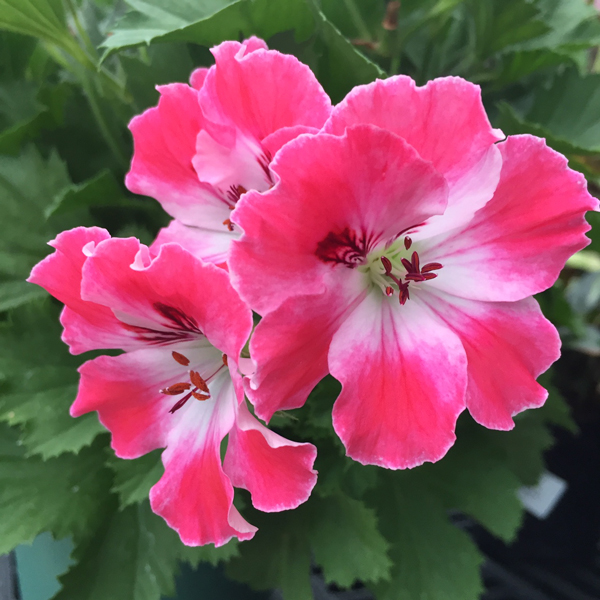By R. Wayne Mezitt
The cold-hardy landscape geraniums (called “cranesbill” for the shape of their seedpods) are much different from those tender Pelargonium orange, red or white flowered summer-bedding/potted-plants we commonly call “geraniums”. True geraniums are a versatile and reliable landscape choice, so often underappreciated in our gardens. Widely available in dozens of species and cultivars, they offer a surprisingly broad range of flower and foliage colors. A well-behaved, long lived and easy to grow groundcover choice, some are less than a foot tall, others can grow to two-feet or more during the year.
Geranium cultivar flower colors range from purple-blue like ‘Azure Rush’ and ‘New Hampshire Purple’ through the pinker tones of ‘Ballerina’ and ‘Bevans’ to the nearly-white ‘Biokovo’. The new cultivar ‘Perfect Storm’ features magenta flowers with near-black centers to create a striking effect. Geraniums generally start blooming mid to late spring, some types continuing for many weeks. ‘Rozanne’ is perhaps the longest-flowering cultivar offering attractive lavender-blue color all summer. Don’t be afraid to cut back the plants hard after flowering; this re-invigorates them so they can re-bloom later in the year.
Foliage colors vary from bright green to greyish to bronze and purple, with a range of textures and leaf sizes. It’s easy to weave patches of them together to create an attractive tapestry effect, combining groupings of several different cultivars. Although only a few cultivars stay evergreen over the winter, many offer attractive purple, red or orange-yellow autumn tones. Some of the cultivars of cantabrigiense and macrorrhizum offer the additional feature of distinctly fragrant foliage, particularly appealing when brushed by walking by or even by the wind.
Unlike some woody groundcovers, geraniums are fine companions for most other woody and herbaceous plants in the garden. They have moderate water and nutrient requirements that enable deeper-rooted plants to grow well in among them, suppressing weeds all the while. All varieties and cultivars are pest, disease, deer and rabbit resistant, a major benefit for many gardens. They grow well in full sun and partial shade, flowering less intensely and becoming lankier as light levels decrease. Although not especially drought resistant, they tolerate a wide range of growing condition, but do not appreciate soggy winter soils.
Most landscape geraniums are perfectly hardy in this region, growing relatively quickly, spreading to form a dense mound with trailing stems that can re-root. Some are clump-like with rambling stems and branches. All are effective in forming a thick weed-choking mat over time. Most cultivars are sterile, and a few tend to modestly seed-in, gently spreading to create interest in new sections in your garden.
If you have a chance this summer, stop by and visit The Gardens of Elm Bank on rte. 16 in Wellesley. Here you’ll see Mass Hort’s Bressingham Garden featuring “the world’s longest Geranium Rozanne River”, an impressive display of this outstanding geranium cultivar introduced in the 1990’s by English plantsman Adrian Bloom.







